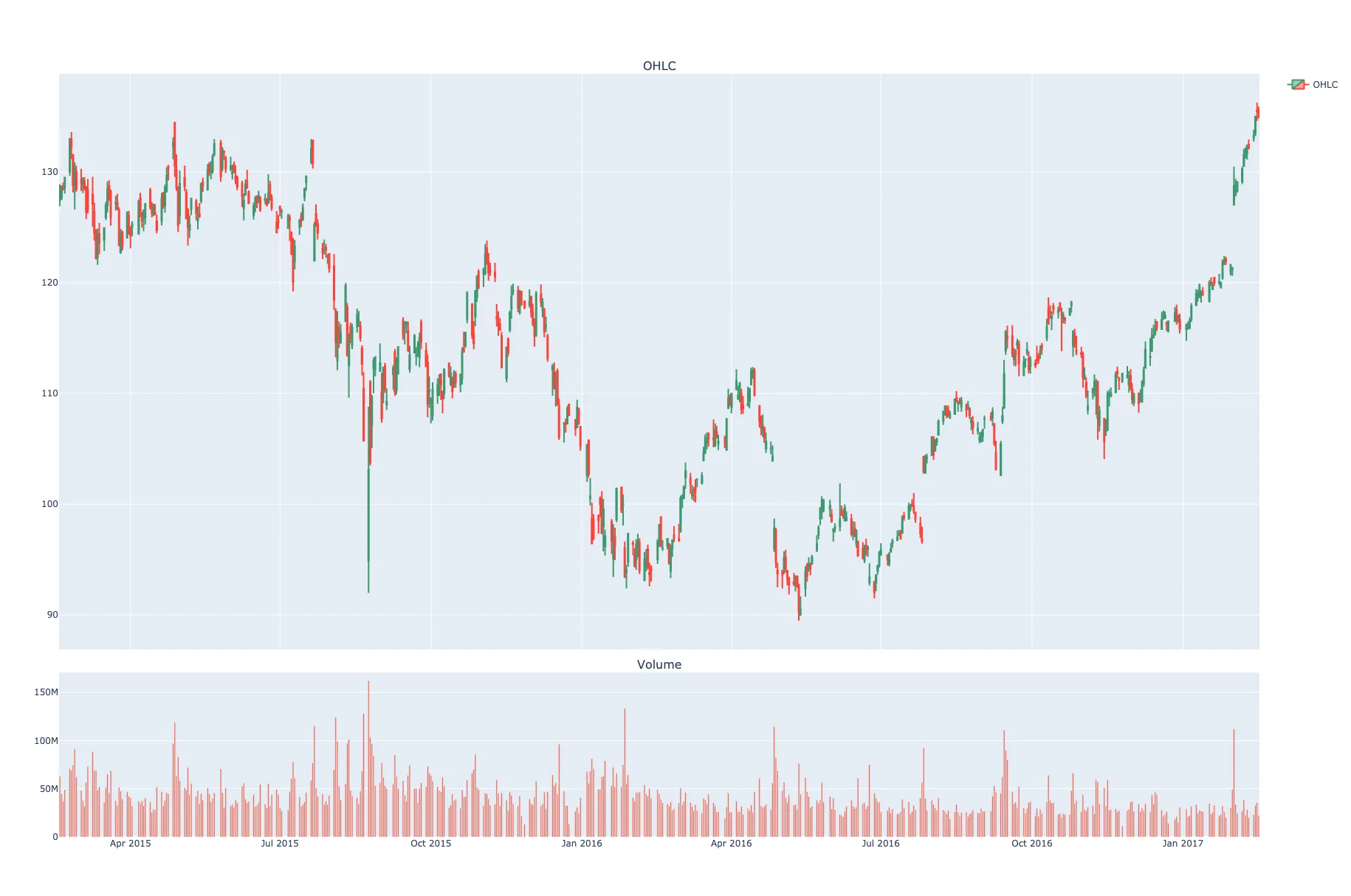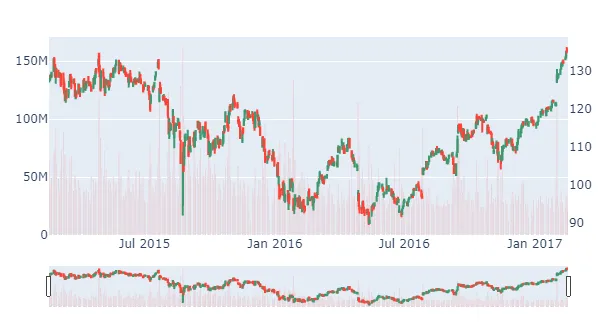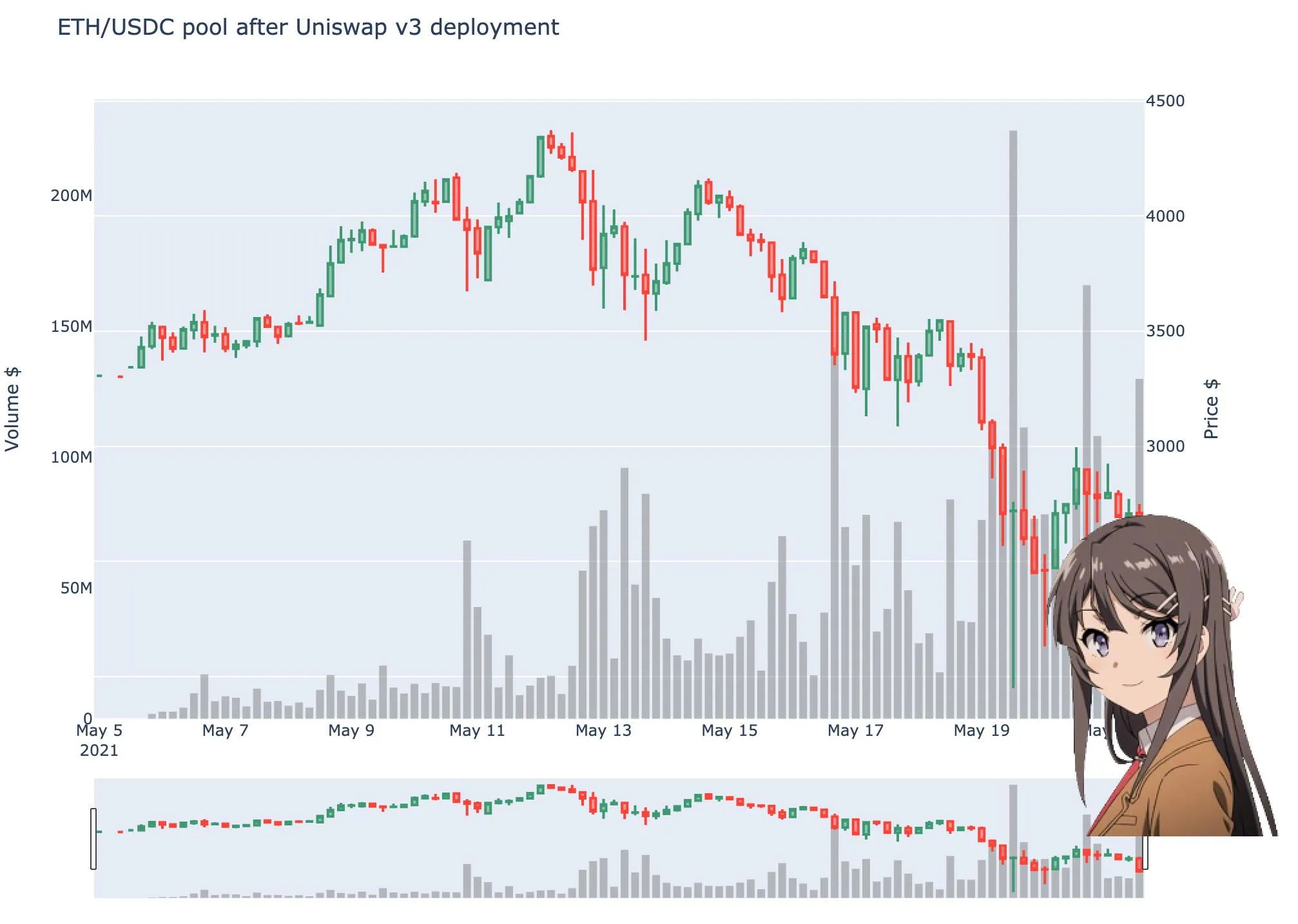代码:
from plotly.offline import init_notebook_mode, iplot, iplot_mpl
def plot_train_test(train, test, date_split):
data = [Candlestick(x=train.index, open=train['open'], high=train['high'], low=train['low'], close=train['close'],name='train'),
Candlestick(x=test.index, open=test['open'], high=test['high'], low=test['low'], close=test['close'],name='test')
]
layout = {
'shapes': [
{'x0': date_split, 'x1': date_split, 'y0': 0, 'y1': 1, 'xref': 'x', 'yref': 'paper',
'line': {'color': 'rgb(0,0,0)', 'width': 1}}],
'annotations': [{'x': date_split, 'y': 1.0, 'xref': 'x', 'yref': 'paper', 'showarrow': False, 'xanchor': 'left','text': ' test data'},
{'x': date_split, 'y': 1.0, 'xref': 'x', 'yref': 'paper', 'showarrow': False, 'xanchor': 'right', 'text': 'train data '}] }
figure = Figure(data=data, layout=layout)
iplot(figure)
上述代码是正确的。但现在我想在这个K线图中添加“volume”(成交量)
代码:
from plotly.offline import init_notebook_mode, iplot, iplot_mpl
def plot_train_test(train, test, date_split):
data = [Candlestick(x=train.index, open=train['open'], high=train['high'], low=train['low'], close=train['close'],volume=train['volume'],name='train'),
Candlestick(x=test.index, open=test['open'], high=test['high'], low=test['low'],close=test['close'],volume=test['volume'],name='test')]
layout = {
'shapes': [
{'x0': date_split, 'x1': date_split, 'y0': 0, 'y1': 1, 'xref': 'x', 'yref': 'paper',
'line': {'color': 'rgb(0,0,0)', 'width': 1}}
],
'annotations': [
{'x': date_split, 'y': 1.0, 'xref': 'x', 'yref': 'paper', 'showarrow': False, 'xanchor': 'left',
'text': ' test data'},
{'x': date_split, 'y': 1.0, 'xref': 'x', 'yref': 'paper', 'showarrow': False, 'xanchor': 'right',
'text': 'train data '}
]
}
figure = Figure(data=data, layout=layout)
iplot(figure)
错误:
值错误:为类型为plotly.graph_objs.Candlestick的对象指定了无效属性“volume”


